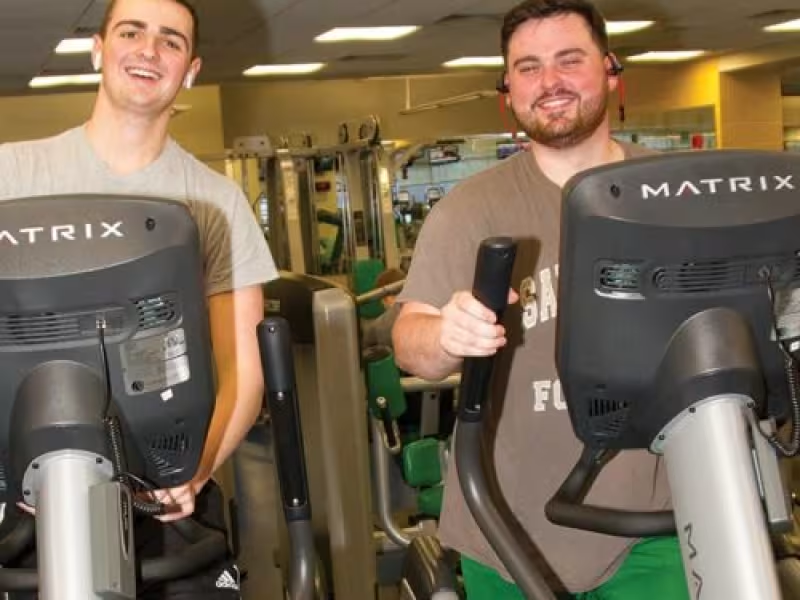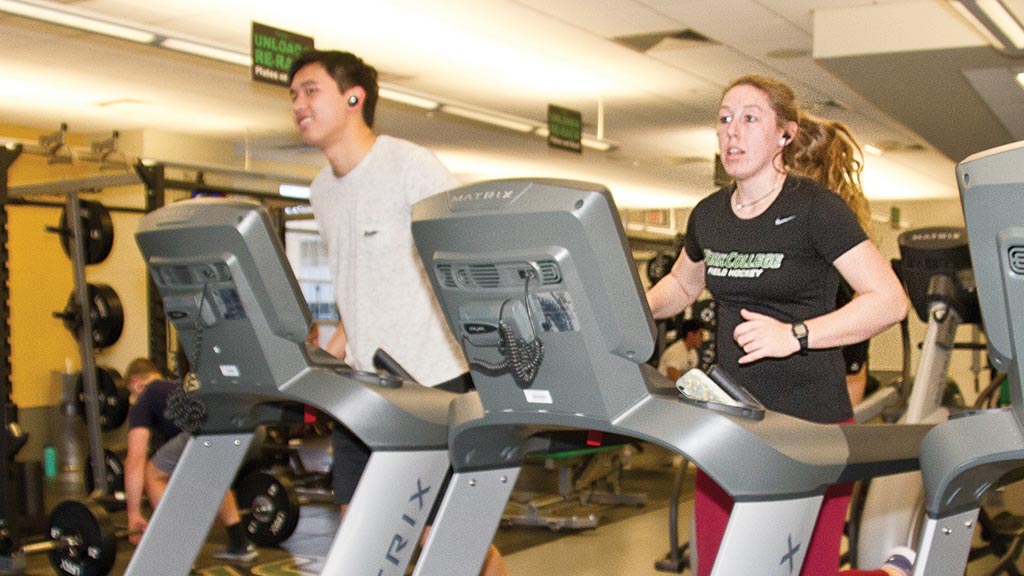
According to the Pew Research Center, Generation Z — those born after 1996 — have been coined “the first generation of true digital natives.” This generation has grown up in a digital world, more technology-focused than anyone in the recreation field has experienced before. For this reason, all campus professionals need to be evaluating the technology offered in their facilities. As such, below are three different types of technology to invest in this year to attract new students:
Sprint 8
According to the Sprint 8 website, the program is an efficient, fat-burning HIIT workout that gives participants a complete cardio exercise experience, including warm-up and cool-down, in just 20 minutes. Most people see results in eight weeks or less.
The complete workout is:
- 3-minute warm-up and 2.5-minute cool down
- 30-second sprints
- 90-second active recovery intervals
Rachael Finley, the director of Campus Recreation at York College of Pennsylvania, shared her team ran a successful challenge pre-COVID-19. They plan to get the program up and running again once more restrictions lift for indoor workouts. “What I loved about the Sprint 8 program — which really aligns with our motto — is it’s for everyone,” said Finley. “And our motto is campus rec is for ‘every body.’ It doesn’t matter where you’re at in your fitness journey, Sprint 8 is for you.”

Other than the low time commitment, Finley said the technology aspect of the Sprint 8 program was one of the biggest attractions to students. “Students loved it, and we can run the program because we have Matrix equipment,” she said. “It’s easy to come in and hit a button on our treadmill, elliptical or bike and be on your way. You don’t have to time anything or think, and that’s the piece that was really appealing. The technology feature really played a huge role in it.”
InBody
InBody is a body composition analyzer that conducts 15-second tests to measure fat mass, muscle mass and body water, all by standing on a device and holding hand electrodes.
Caleb Powell, the head personal trainer for Recreational Athletics at Drexel University, said his department’s InBody 270 is used a lot with at least one or two sessions a week. And one of the biggest ways they market the device is with the phrase, “Not all Pounds are Equal.”
The goal of leading with this phrase is to help students change the way they see their weight. It can be a very sensitive topic for many students. The Inbody device allows users to understand their health by seeing how much muscle, fat and water they have instead of relying on a number on a scale.
EXTRA CREDIT: Here’s how another university uses body composition testing.
“You’re going to have two people essentially weigh the same amount and look totally different depending on the muscle and fat makeup,” said Powell. “The biggest thing is letting people understand it’s not a handheld thing, or some gimmick, it’s actually science. In fact, it’s the second-best measurement of bodyweight fat and muscle distribution, with hydrostatic testing being the first.”
In terms of the technology, Powell described the InBody device as very simple, user-friendly and non-intimidating. “It’s a great tool to involve people with their health because it’s not intimidating,” he elaborated. “Using calibers can be intimidating whereas with the InBody, you walk in and are fully clothed. I think it’s more inviting to the student body.”
Another added plus of the InBody technology is every test includes a full-page result sheet printout. It details muscle, fat and water measurements, and highlights specific areas to focus on. Powell shared he uses this information during personal training sessions and it’s an added bonus to show participants and guide next sessions.
SA WELL+
SA WELL+ is an all-encompassing software system that works with the SportsArt ECO-POWR line. It includes energy production tracking, machine usage stats, an error device manager, and a local and global watts-produced leaderboard.
The leaderboard is one of the biggest attractions of this technology. It enables a facility to display top energy producers with real-time data on energy generated. In addition, those users can truly visualize their energy — an increasing trend among new college students.
According to a report by First Insight, “73% of Gen Z consumers surveyed were willing to pay more for sustainable products, more than every other generation. And, despite being the youngest cohort with many still in school, they were willing to spend the most in added costs, with 54% saying they would pay more than a 10% increase in price for a sustainably made product.”

With stats like this in mind, Ruben Mejia, the executive vice president of SportsArt America, shared a few ways recreation facilities can incorporate this technology and engage more of their Gen Z students.
“Users can record their workouts on our app and scan the QR code on the machine to get real-time data on their phone,” explained Mejia. “It’s basically a workout log with the added benefit of knowing how much electricity you yourself have generated.”
EXTRA CREDIT: Check out this additional green technology and how to use it in your facility.
This can be a huge marketing benefit for any facility as the social media-savvy generation is likely to share their contributions with their followers online. Additionally, it allows creative opportunities for the fitness center itself. Mejia shared examples such as prizes for the top five electricity-generating users during specific time frames and hosting promotional events to generate X amount of electricity for a common cause.
“I always tell people to advertise the fact they’re offsetting their carbon footprint with fitness equipment,” said Mejia. “And the gym is now a contributor to the overall sustainability mission. It comes down to getting the word out and bringing people together to say, ‘We’re doing something good here. Why don’t you help us in doing that as well?’”

Brittany Howard
Brittany is an editor at Peake Media. Reach her at brittany@peakemedia.com